

A charming Normandy hotel
In the heart of Cabourg
A warm and typical atmosphere in the heart of Normandy and the town of Cabourg at the Hôtel de Paris! Ideally located at the corner of the avenues de la Mer and de la République, our hotel is immediately identifiable thanks to its half-timbered façade. Built in 1881, it is the oldest hotel in the town. From simple to family rooms, each of our 22 rooms offers its share of comfort, space and charm. From the Hôtel de Paris in Cabourg, where a friendly and professional team welcomes you, enjoy the particular charm of this romantic town in the Belle Epoque style, go down to the seaside in a few steps and discover Normandy.
Rooms for all stays
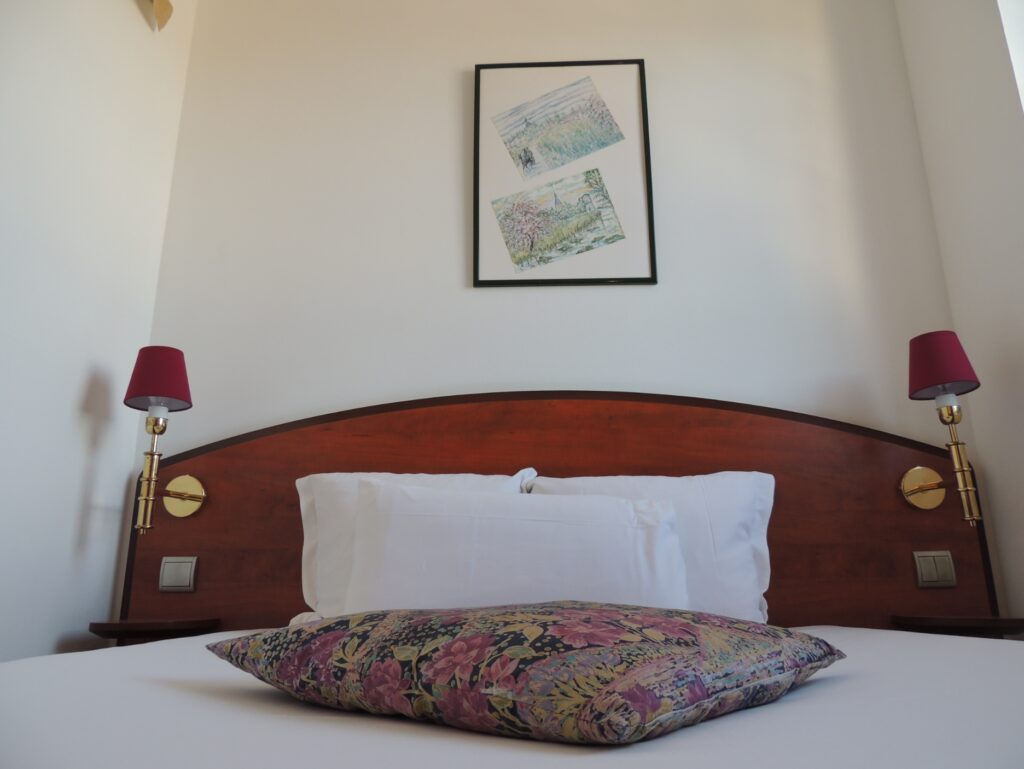
Single room
This small room on the 3rd floor of the hotel and Café de Paris is ideal for a solo traveller in Cabourg.
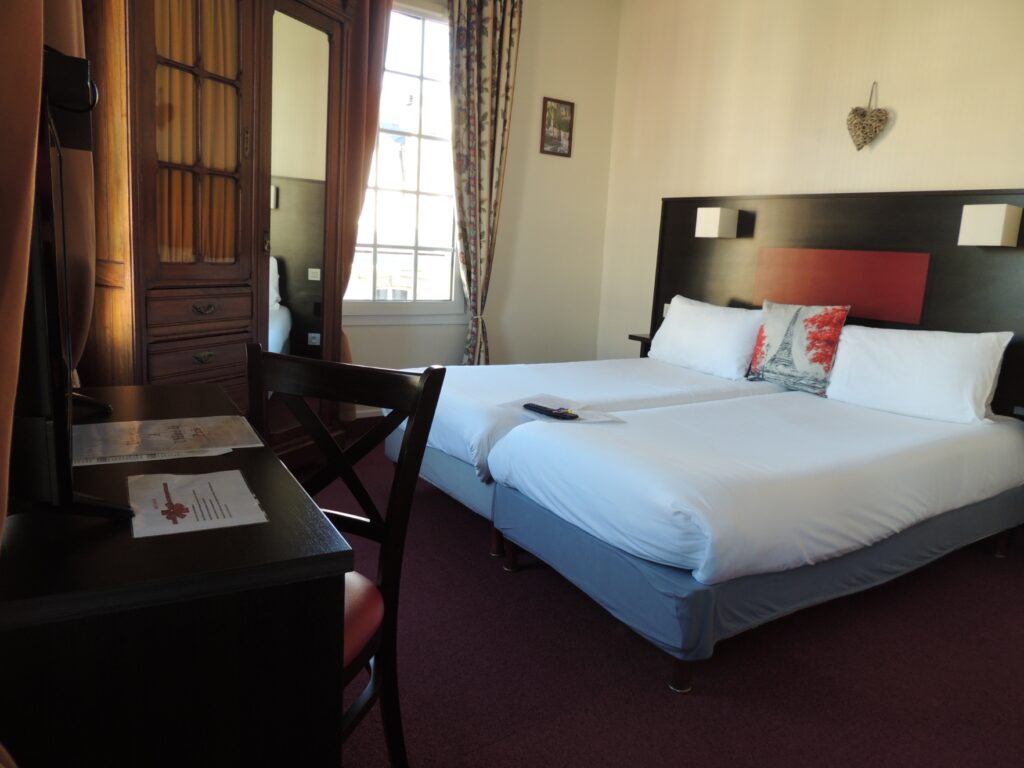
Twin room
Our hotel in Cabourg and its brasserie, the Café de Paris, offer rooms with separate beds for two in the heart of the town known as the "Queen of the Côte Fleurie".
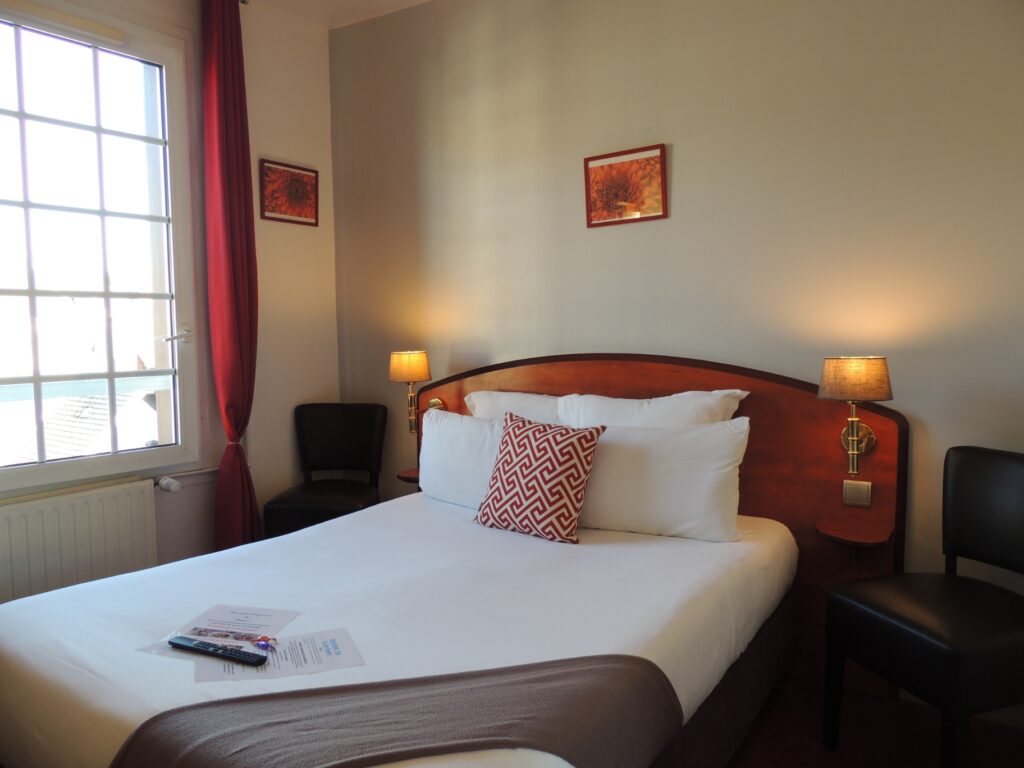
Double room
Looking for a romantic stay in Normandy? The Hotel de Paris offers double rooms just 5 minutes from the beach in Cabourg.
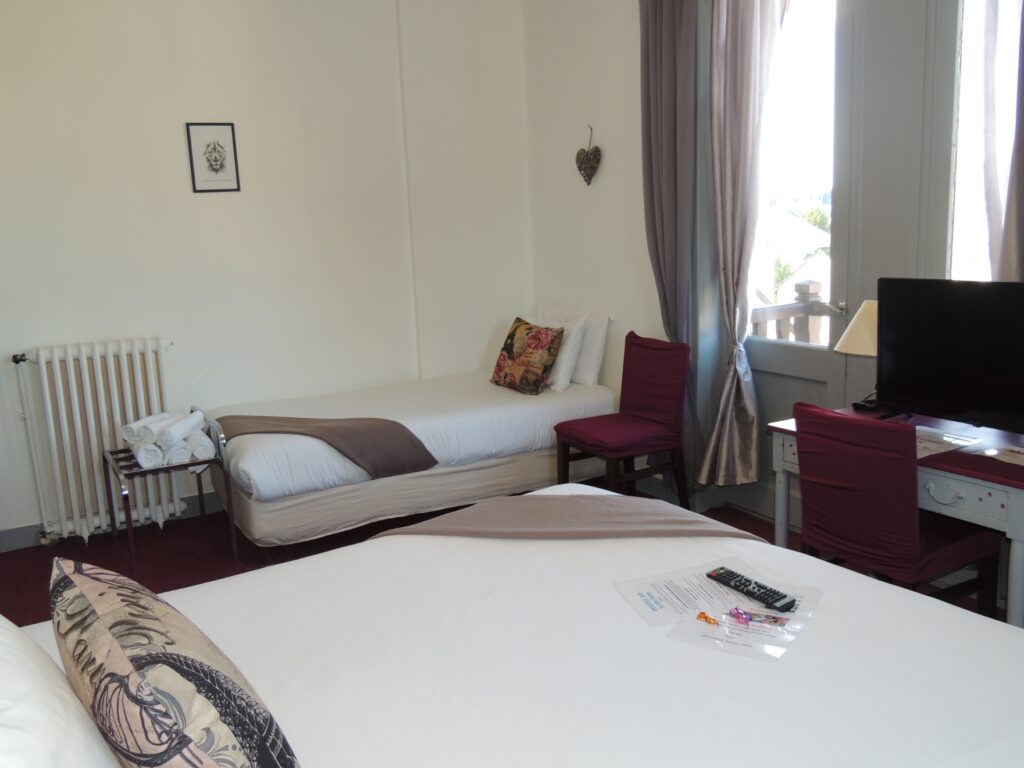
Triple room
This room is ideal for a three-person stay in our hotel in Cabourg. It has a choice of one double and one single bed or three single beds.

Quadruple room
This room is ideal for four people in our hotel in Cabourg and consists of a double bed and two single beds.
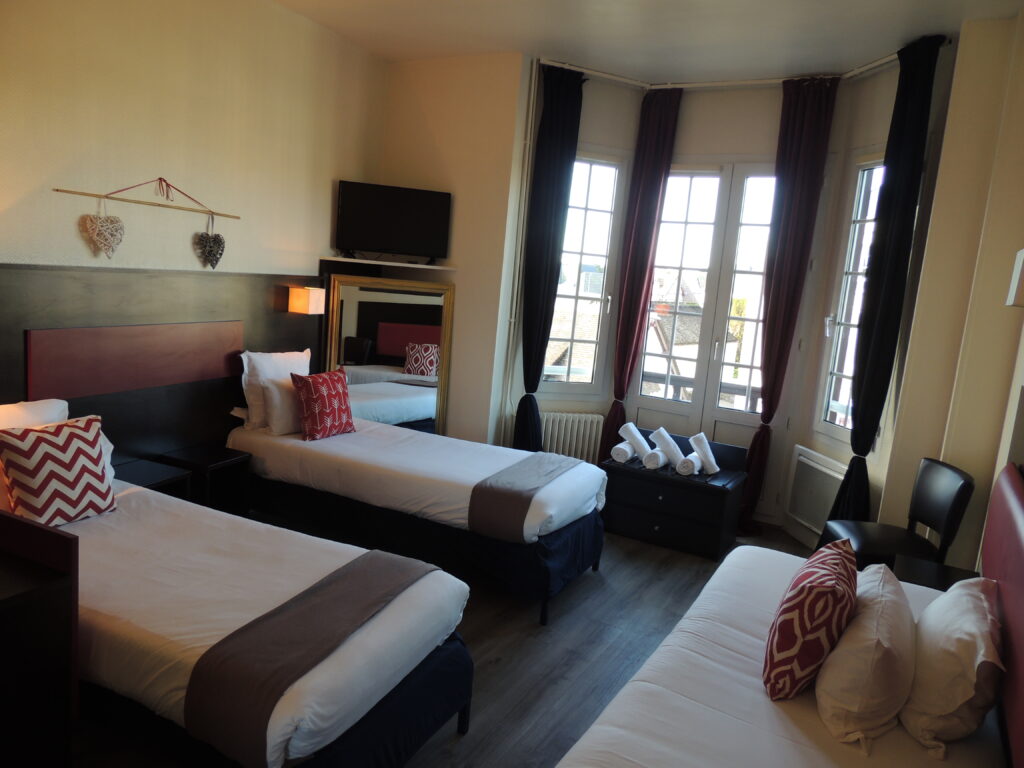
Family room
This space, perfect for a family stay and hotel holidays in Cabourg, is composed of two separate rooms for more privacy, one with a double bed and the other with 3 single beds.
The Restaurant
Le Café de Paris
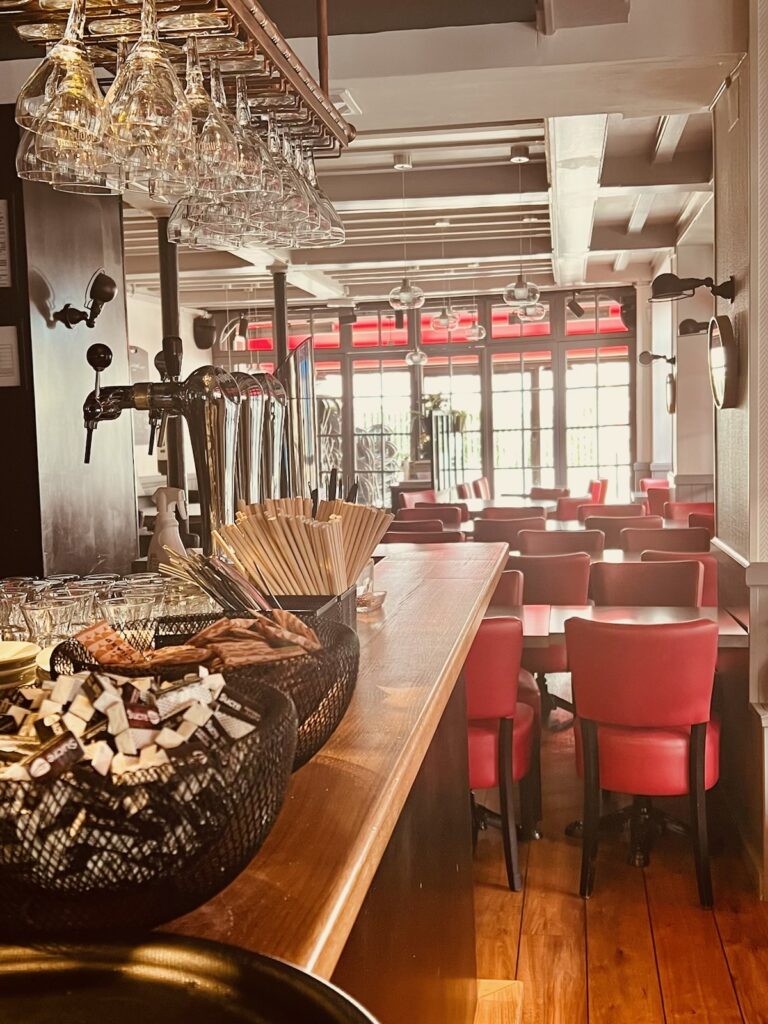
The Restaurant
Le Café de Paris
Our colourful brasserie welcomes you all year round for a gourmet break just a few steps from the beach and the Promenade Marcel Proust. A beautiful, bright room where red tones underline the Belle Époque atmosphere, an extensive menu, an ideal central location and the warm welcome of our staff are the promise of beautiful interludes to share with friends or business lunches. Don't hesitate to take a break during your walks for a sweet snack, to be chosen from our dessert menu.

Tourism
In the heart of Cabourg
Take advantage of the hotel's ideal location to discover the Côte Fleurie, the D-Day Beaches and the Pays d'Auge. From the Hotel de Paris in the centre of Cabourg, you can visit the seaside resort, nicknamed the "Queen of the Côte Fleurie", on foot and explore the treasures of the Normandy coast such as Deauville, Trouville and Honfleur.
on Instagram


